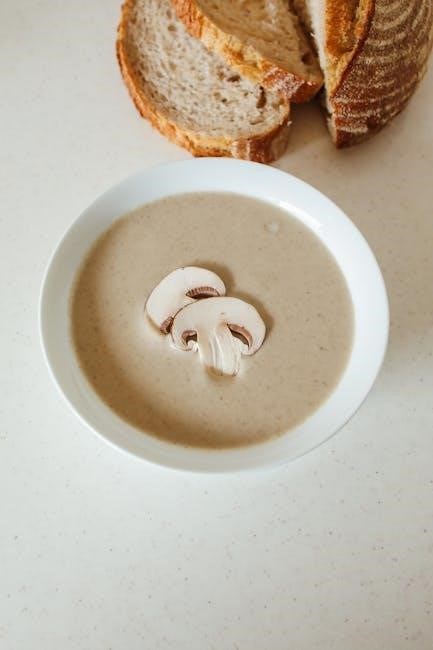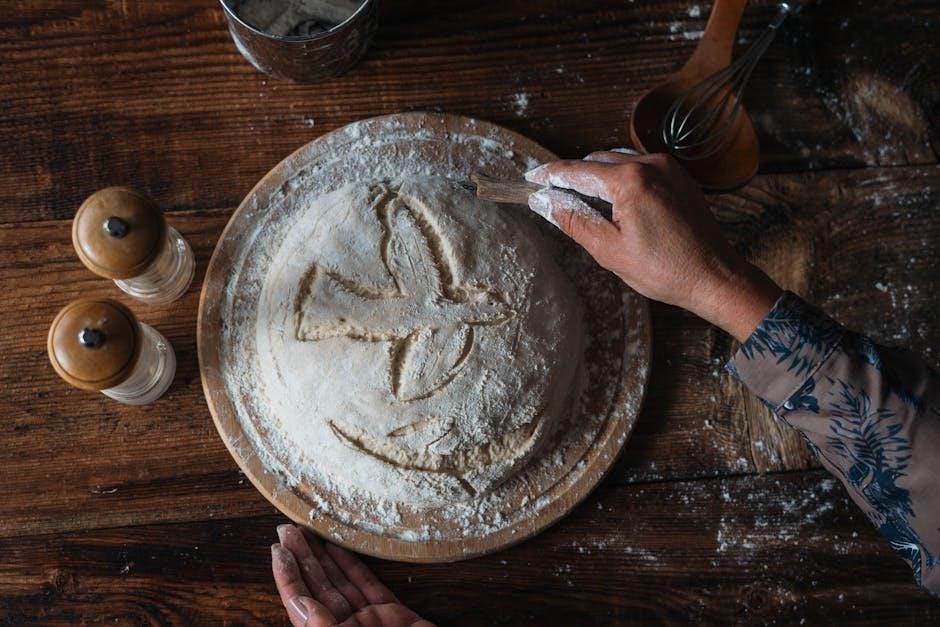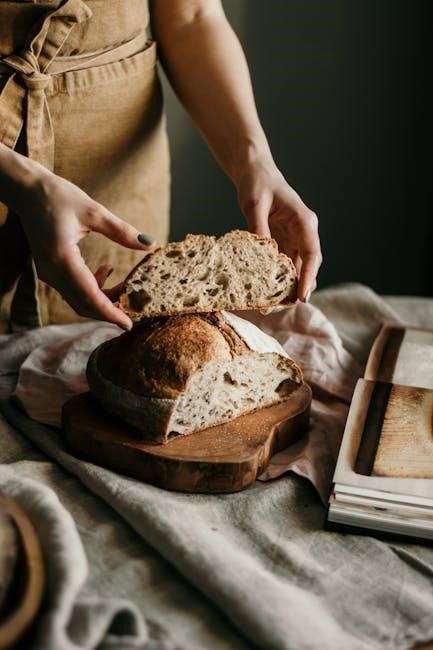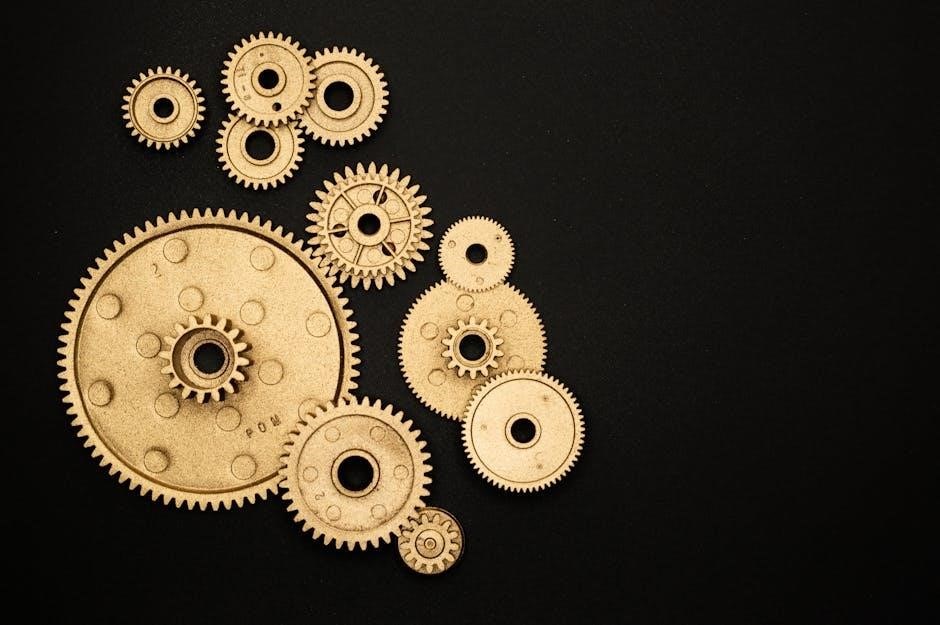Your ultimate viewing companion, the Rogers London Ontario TV Guide offers detailed schedules, HD and 4K options, and exclusive local content, ensuring you never miss your favorite shows or events.
Overview of Rogers TV Services in London, Ontario
Rogers TV offers a comprehensive range of television services in London, Ontario, providing residents with access to a diverse selection of channels, including popular networks, HD, and 4K options. The service caters to a wide range of preferences, from entertainment and sports to local community programming. With a focus on delivering high-quality broadcasting, Rogers ensures that viewers can enjoy crisp visuals and immersive sound. Additionally, the platform is committed to showcasing local events, such as London Knights games and community initiatives, making it a vital source for staying connected to what’s happening in the city. Regular updates and a user-friendly interface further enhance the viewing experience, ensuring that Rogers TV remains a trusted choice for London residents.
Importance of TV Guides for Viewers
TV guides play a crucial role in enhancing the viewing experience by providing users with a clear and organized schedule of programs. They allow viewers to plan their watching preferences in advance, ensuring they never miss their favorite shows or live events. For residents of London, Ontario, the Rogers TV guide offers detailed listings, making it easier to navigate through various channels and genres. This tool is especially valuable for sports fans, as it highlights live games and events, such as London Knights matches. Additionally, TV guides help users discover new programs and stay updated on community events, fostering a deeper connection to local content. By offering a comprehensive overview, TV guides empower viewers to make informed choices, maximizing their entertainment experience.

Channel Lineup and Availability

Rogers London Ontario TV Guide provides a comprehensive channel lineup, including HD and 4K options, ensuring viewers can access their favorite shows and events effortlessly.
Popular Channels Available on Rogers TV
Rogers TV in London, Ontario, offers a diverse range of popular channels catering to all interests. Sports enthusiasts can enjoy Sportsnet, TSN, and ESPN for live games and analysis. Movie buffs will appreciate channels like HBO, Crave, and TMN for the latest films and series. News seekers can stay updated with CBC, CTV, and Global News. Families will love Disney Channel, Nickelodeon, and YTV for kid-friendly content. Additionally, viewers can access local channels like CFPL-DT for community-focused programming. With options for HD and 4K, Rogers TV ensures a high-quality viewing experience. Whether you’re into entertainment, sports, or education, there’s something for everyone on Rogers TV in London.
HD and 4K Channel Options
Rogers TV in London, Ontario, offers an exceptional viewing experience with its extensive selection of HD and 4K channels. High-definition channels provide crisp, vibrant visuals, while 4K channels deliver ultra-sharp resolution for immersive entertainment. Popular HD channels include Sportsnet, TSN, and CBC, ensuring sports fans can enjoy games with stunning clarity. For movie lovers, channels like HBO and Crave offer HD and 4K options, bringing cinematic quality to your home. Additionally, many local and national channels are available in HD, enhancing the overall viewing experience. Rogers TV’s commitment to quality ensures that subscribers can enjoy their favorite shows and events in the best possible definition, making it a top choice for viewers in London, Ontario.
Channel Lineup Changes and Updates
Rogers TV in London, Ontario, frequently updates its channel lineup to enhance viewer experience and meet evolving preferences. These changes may include adding new channels, removing outdated ones, or reorganizing the lineup for better accessibility. Subscribers can stay informed about the latest updates by visiting the Rogers website or checking the TV guide app. The platform also provides notifications for significant changes, ensuring viewers are always aware of new additions or modifications. Regular updates ensure that the channel lineup remains relevant, offering a diverse range of content from sports to entertainment. This dynamic approach allows Rogers TV to stay ahead in providing quality programming tailored to the community’s needs in London, Ontario.
TV Listings and Schedules

Rogers London Ontario TV Guide provides detailed schedules for today, tonight, and the next two weeks. Search by postal code or channel to find your favorite shows and set reminders for upcoming events, ensuring you never miss a moment of primetime TV, sports, or local coverage.
How to Search the London TV Listings Guide
To search the London TV Listings Guide, users can easily navigate by postal code, time, or specific channel. Simply enter your postal code to view localized schedules, ensuring accurate and relevant results. You can also filter listings by HD or 4K channels for enhanced quality. Additionally, the guide allows searching by time slots, making it easy to discover what’s airing during specific hours. Detailed schedules for the next two weeks are available, enabling users to plan their viewing in advance. With features like setting reminders and filtering by preferences, the guide ensures you never miss your favorite shows, movies, or live sports events. This user-friendly tool is designed to enhance your viewing experience, providing quick access to all TV listings in London, Ontario.
Primetime TV Shows and Movies
Discover the best of primetime TV shows and movies with Rogers London Ontario TV Guide. From popular dramas to blockbuster films, the guide offers a comprehensive lineup of evening entertainment. Users can explore detailed schedules for HD and 4K channels, ensuring crisp and vibrant viewing experiences. With exclusive content from top networks, viewers can stay updated on their favorite series and catch the latest movie releases. The guide also highlights live events and special programming, making it easy to plan your primetime viewing. Whether you’re a fan of local productions or international hits, Rogers TV provides a diverse selection of shows and movies to suit every taste. Stay entertained with the latest primetime offerings, all in one convenient guide.
Upcoming Schedule for the Next 2 Weeks
Stay ahead with Rogers London Ontario TV Guide’s detailed schedule for the next 14 days. Plan your viewing with precise air dates and times for popular shows, live sports, and movies. Highlights include exclusive coverage of the London Knights’ home and away games, as well as special events like the Fanshawe College Graduation Ceremonies and the London Majors Game of the Week. Don’t miss primetime favorites, community-focused programs, and HD/4K broadcasts. Check the guide for live events, local productions, and network premieres. With updated listings every day, you’ll never miss a moment of entertainment in London, Ontario. Visit the guide now to explore the full lineup for the next two weeks and set reminders for your must-watch shows.

Features and Functionality
Rogers London Ontario TV Guide offers advanced search options, personalized viewing experiences, and reminders to never miss your favorite shows, ensuring a seamless entertainment experience.
Personalized TV Viewing Experience
Rogers London Ontario TV Guide offers a tailored viewing experience, allowing users to customize their entertainment. With advanced features, viewers can filter channels, set favorites, and receive recommendations based on their preferences. This ensures a seamless and enjoyable experience, catering to individual interests. The guide also supports personalized reminders and notifications, keeping you updated on upcoming shows and events. Additionally, users can explore local content, including community events and exclusive broadcasts, making it easier to stay connected to what matters most. By combining these features, Rogers TV Guide enhances your ability to discover new programs while ensuring you never miss your favorites, creating a truly personalized entertainment experience.
Advanced Search Options by Time or Channel
The Rogers London Ontario TV Guide offers advanced search options, enabling users to easily find their favorite shows by time or channel. This feature allows viewers to plan their viewing schedule efficiently, ensuring they never miss a program. Whether you’re searching for live sports, primetime TV shows, or local events, the guide provides a user-friendly interface to filter and sort content. The ability to search by time or channel enhances the overall viewing experience, making it simpler to discover new programs or track your favorite series.

With these options, viewers can quickly navigate through the extensive channel lineup, ensuring they find exactly what they’re looking for. This feature is particularly useful for viewers who want to maximize their entertainment time and stay updated on the latest broadcasts.
Never Miss Your Favorite Shows
The Rogers London Ontario TV Guide ensures you never miss your favorite shows with its advanced reminder and notification features. By setting reminders for upcoming programs, viewers can stay updated on their preferred content. Additionally, the guide allows users to create personalized watchlists, making it easier to track and manage their viewing schedule. Whether it’s a primetime TV show, a live sports event, or a local community program, the guide provides tools to keep you informed and entertained. With the ability to search by postal code and view schedules up to two weeks in advance, you can plan your viewing experience with utmost convenience and accuracy.

Sports Coverage
Exclusive live sports broadcasts, including London Knights games and regional events, make Rogers TV a premier destination for sports enthusiasts in London, Ontario.
Live Sports Events on Rogers TV
Rogers TV brings exclusive live sports coverage to London, Ontario, featuring London Knights home and away games, London Majors matches, and other regional sports events. With a focus on local athletics, viewers can enjoy comprehensive broadcasts that highlight community spirit and elite competition. The platform also includes real-time updates, scores, and in-depth analysis, making it a must-watch for sports enthusiasts. Additionally, Rogers TV covers unique events like Fanshawe College graduation ceremonies, blending education and community celebration. The guide allows users to search by postal code, ensuring they never miss their favorite teams or events. This blend of local and regional sports coverage makes Rogers TV a vital resource for staying connected to London’s vibrant sports scene.
London Knights Home and Away Games
Rogers TV provides exclusive live broadcasts of London Knights home and away games, offering fans unparalleled access to their favorite hockey team. With high-quality HD and 4K coverage, viewers can enjoy every moment of the action. The broadcasts feature expert play-by-play commentary and in-depth analysis, making the experience even more engaging. Fans can also catch pre-game and post-game shows, providing insights into team strategies and player performances. The schedule is easily accessible via the Rogers TV guide, allowing viewers to plan their watching experience. This comprehensive coverage ensures that hockey enthusiasts in London, Ontario, never miss a moment of the Knights’ thrilling matches, whether they’re playing at home or on the road.

Sports Schedule in London, Ontario
Rogers TV offers an extensive sports schedule in London, Ontario, catering to diverse interests. From live hockey games featuring the London Knights to exclusive coverage of the London Majors baseball games, viewers can stay connected to local sports. The schedule includes detailed listings for various sports events, ensuring fans never miss a moment of their favorite teams in action. With HD and 4K broadcasting, the viewing experience is enhanced, providing crystal-clear coverage of every play. The Rogers TV guide makes it easy to find and track upcoming games, allowing sports enthusiasts to plan their viewing experience. This comprehensive sports coverage ensures that residents of London, Ontario, have access to all the thrilling local and regional sports action they love.
Community and Local Events
Rogers TV highlights London, Ontario’s vibrant community events, including Fanshawe College graduations, London Majors games, and local reflections, bringing you closer to your community’s voice and culture.
Local Voices and Community Reflections
Rogers TV brings London, Ontario’s community to life with local voices and reflections, showcasing diverse stories, cultural events, and in-studio discussions. From unique local programming to live event coverage, the platform highlights the city’s vibrant culture, ensuring residents stay connected to their community. With a focus on inclusivity and diversity, Rogers TV provides a platform for local talent, community leaders, and everyday citizens to share their perspectives. This dedication to local storytelling fosters a sense of belonging and keeps viewers informed about what matters most in their area. By prioritizing community engagement, Rogers TV strengthens its role as a trusted source for local news, events, and inspiration.
Coverage of London Majors Games
Rogers TV provides comprehensive coverage of the London Majors games, bringing fans closer to the action with live broadcasts and exclusive highlights. Viewers can enjoy pre-game analysis, post-game interviews, and behind-the-scenes insights, making it a must-watch for baseball enthusiasts. The platform ensures that fans never miss a pitch, offering detailed schedules and updates. Whether it’s home games at Labatt Park or away matches, Rogers TV keeps the community connected to their beloved team. With high-quality broadcasting and in-depth coverage, the London Majors games are a highlight of local sports programming, allowing fans to cheer on their team in real-time and stay engaged with the latest developments.
Events Like Fanshawe College Graduation Ceremonies
Rogers TV offers extensive coverage of events like Fanshawe College graduation ceremonies, ensuring that important community moments are accessible to all. Viewers can watch live broadcasts or catch up with highlights, allowing graduates and their families to relive these special occasions. Alongside graduations, Rogers TV also covers events such as the International Women’s Day Breakfast and other local gatherings, providing a platform for community engagement. The high-quality broadcasts, including HD and 4K options, enhance the viewing experience. Additionally, Rogers TV provides pre-event coverage, interviews with participants, and post-event analysis, giving viewers a comprehensive look at these milestones. By airing these events, Rogers TV strengthens community bonds and keeps residents informed and connected to what matters most in London, Ontario.
Technical Aspects
Rogers TV delivers HD and 4K broadcasting quality, ensuring crisp visuals and immersive sound. The channel lineup is available via cable, satellite, or antenna, catering to diverse viewer preferences. Regular service updates and technical improvements maintain optimal performance, providing seamless entertainment experiences for users in London, Ontario.
HD and 4K Broadcasting Quality
Rogers TV in London, Ontario, offers exceptional HD and 4K broadcasting quality, delivering crisp visuals and immersive sound for an enhanced viewing experience. With a focus on clarity and precision, HD channels provide vibrant colors and sharp details, while 4K content elevates entertainment to the next level with ultra-high-definition resolution. This advanced broadcasting ensures that viewers can enjoy their favorite sports, movies, and shows with unparalleled quality. The HD and 4K options are available across a wide range of channels, making it easy for viewers to access premium content without compromising on picture quality. Rogers TV’s commitment to high-definition broadcasting ensures that every moment on screen is as lifelike as possible, offering a cinematic experience from the comfort of home.
Channel Lineup for Cable, Satellite, and Antenna
Rogers TV in London, Ontario, provides a diverse channel lineup accessible through cable, satellite, and antenna. Cable subscribers enjoy a wide range of popular channels, including sports, entertainment, and news networks. Satellite viewers benefit from similar offerings with the flexibility of reception beyond traditional cable areas. Antenna users can access free over-the-air channels, including local stations like CFPL-DT, ensuring community-focused content remains available to all. The channel lineup is tailored to meet the viewing preferences of residents, offering a mix of national and local programming. Whether through cable, satellite, or antenna, Rogers TV ensures that viewers in London, Ontario, have access to a variety of channels to suit their interests and stay connected to their community.

Stay Updated on Service Changes
Keeping up with the latest service changes is essential for a seamless viewing experience. Rogers TV in London, Ontario, regularly updates its channel lineup and service offerings. Viewers can stay informed through official notifications, updates on the Rogers website, and the TV guide itself. These updates often include new channel additions, removals, or adjustments in HD and 4K broadcasting. Subscribers are encouraged to check their emails and the Rogers TV portal for the most recent information. By staying updated, viewers can ensure they never miss their favorite shows or new programming. Regular updates also help users adapt to any technical changes, such as shifts in channel numbers or broadcasting quality improvements.

How to Use the TV Guide
Access the Rogers London Ontario TV Guide online or via the app. Enter your postal code or select your region for personalized listings. Browse by time, channel, or category. Use the search function to find specific shows or movies. Set reminders for upcoming programs and explore features like HD/4K filters. Check for service updates and new channels. The guide updates in real-time, ensuring current information. Available on multiple devices, it integrates with DVR and on-demand services for enhanced viewing. Navigate easily with sections like “Today’s Schedule” or “Local Events.” Personalized recommendations and social sharing options add to the experience. Utilize tutorials or customer support for assistance. Plan your TV time seamlessly with this comprehensive tool.
Step-by-Step Guide to Navigating the TV Guide
Visit the Rogers TV Guide website or open the app.
Enter your postal code or select “London, Ontario” to personalize your listings.
Browse the schedule by time, channel, or category (e.g., sports, movies).
Use the search bar to find specific shows, movies, or events.
Filter options by HD or 4K for high-quality viewing.
Set reminders for upcoming programs using the “Remind Me” feature.
Check the “What’s On” section for live events or primetime highlights.
Review the “Next 2 Weeks” schedule for planning.
Explore local content, such as London Knights games or community events.
Use the “Update” section for channel lineup changes or service alerts.
Customize preferences, like favorite channels, for quick access.
Share show details or reminders with family via social media or email.
Access help or tutorials if needed for navigation tips.
Ensure your device is connected for real-time updates.
Enjoy seamless integration with DVR or on-demand services.
Searching by Postal Code
Searching the Rogers TV Guide by postal code allows you to access personalized listings tailored to your location in London, Ontario. Simply enter your postal code on the Rogers TV Guide website or app, and the system will display channels, schedules, and programming available in your area. This feature ensures you see only the content relevant to your region, including local events, sports, and community programming. You can further filter results by time, channel, or category (e.g., HD or 4K). This option is particularly useful for finding local broadcasts, such as London Knights games or Fanshawe College events. By entering your postal code, you can also set reminders for upcoming shows and save favorite channels for quick access. This tool makes it easy to stay updated on what’s airing in your area. Use it to enhance your viewing experience and never miss local highlights or events.
Setting Reminders for Upcoming Shows
Setting reminders for upcoming shows on the Rogers London Ontario TV Guide is a convenient way to stay on top of your favorite programming. Users can easily set reminders through the Rogers TV Guide website or mobile app, ensuring they never miss an episode, movie, or live event. This feature allows you to customize alerts for specific shows, sports games, or movies, providing peace of mind. Reminders can be set by selecting a program from the TV listings and choosing the reminder option. Notifications are sent directly to your device, syncing across platforms for seamless convenience. This tool is especially useful for catching live sports, such as London Knights games, or local events like Fanshawe College graduations. By setting reminders, viewers can enjoy a worry-free experience, knowing they’ll be alerted when their selected shows are about to air. This feature enhances the overall viewing experience and ensures you stay connected to the content that matters most.










